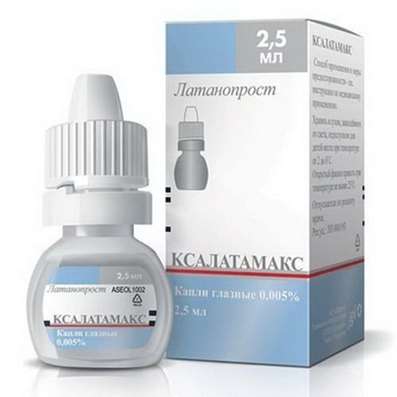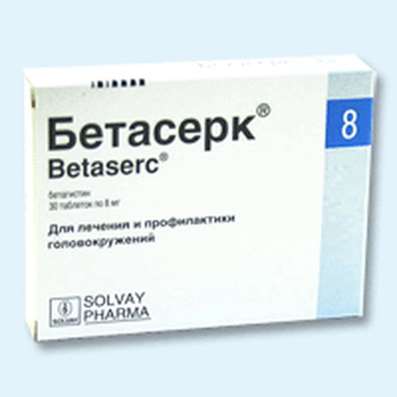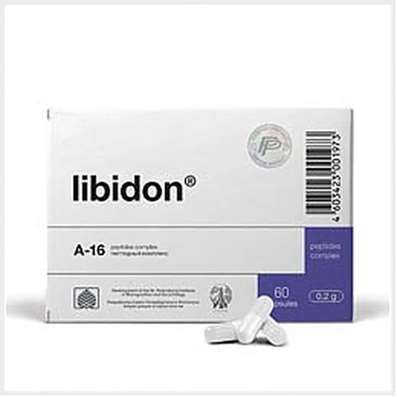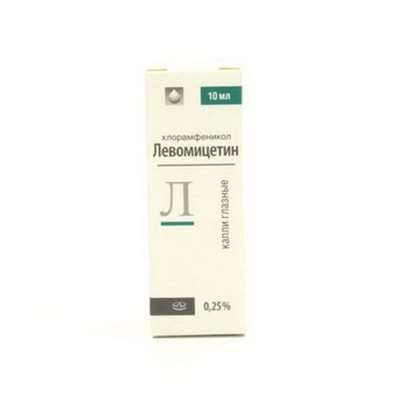Instruction for use: Vibrocil
I want this, give me price
Active substance: Dimetindene + Phenylephrine
ATX Code R01AB01 Phenylephrine in combination with other drugs
Pharmacotherapeutic group:
Antiallergic agents combined (H1-histamine receptor blocker + alpha-agonists) [alpha-adrenoceptor agonists in combination]
Antiallergic agent (H1-histamine receptor blocker + alpha-agonists) [H1-antihistamines in combination]
The nosological classification (ICD-10)
H65.0 Acute serous otitis average
Secretory otitis media, Qatar middle ear, secretory otitis media, otitis serous, Acute serous otitis media, tubo-otitis, Acute Otitis average
H66.0 Acute suppurative otitis media
Acute otitis media, Acute Otitis average
J00 Acute nasopharyngitis [runny nose]
Viral rhinitis, Inflammation of the nasopharynx, Inflammatory diseases of the nose, purulent rhinitis, Nasal congestion, Nasal congestion with colds and flu, The difficulty of nasal breathing, The difficulty of nasal breathing for colds, Difficulty in nasal breathing, Difficulty in nasal breathing in colds, nasal, hypersecretion, cold, ARI with rhinitis phenomena, coryza, Acute rhinitis of various origins, Acute rhinitis with thick purulent mucous exudate, Acute nasopharyngitis, Swelling of the mucosa of the nasopharynx, Rhinitis, rhinorrhea, Infectious-inflammatory diseases of ENT organs, heavy cold, rhinopharyngitis, nasopharyngitis
J01 Acute sinusitis
Inflammation of the sinuses, Inflammatory diseases of the paranasal sinuses, Purulent inflammation of the paranasal sinuses, Infectious-inflammatory diseases of ENT organs, Infection of the sinuses, Combined sinusitis, Exacerbation of sinusitis, Acute inflammation of the paranasal sinuses, Acute bacterial sinusitis, Acute sinusitis in adults, Subacute sinusitis, acute Sinusitis, sinusitis
J30.0 Vasomotor rhinitis
Rhinitis chronic vasomotor neurovegetative
J30.1 Allergic rhinitis caused by the pollen
hay fever, Hypersensitivity to pollen, Polypoid allergic rhinosinusitis, Seasonal hay fever, rhinitis
J31 Chronic rhinitis, nasopharyngitis and pharyngitis
Allergic rhinosinusopathy, Inflammation of the nasal mucosa, Infectious-inflammatory diseases of upper respiratory tract, Catarrh nasopharyngeal area, Year-round rhinitis, Özen, Sore throat or nose hyperplastic, Rhinitis, Faringoezofagit, Chronic bacterial rhinitis
J32 Chronic sinusitis
Allergic rhinosinusopathy, purulent sinusitis, Catarrh nasopharyngeal area, Catarrh of the sinuses, Exacerbation of sinusitis, chronic Sinusitis
T88.9 Complication of surgical and medical care, unspecified
Pain in the postoperative period, Pain in the postoperative period after orthopedic surgery, Pain syndrome after diagnostic procedures, Pain after surgery Diagnostic, Pain after surgery, Pain after orthopedic surgery, Pain after the removal of hemorrhoids, Pain in the application of excimer laser, Pain with injuries and after surgical interventions, Pain syndromes in the dental practice, Painful diagnostic intervention, Painful diagnostic manipulations, Painful instrumental diagnostic procedures, Painful instrumental manipulation, Painful treatments, Painful manipulations, Painful dressings, Painful therapeutic interventions, Pain in the area of the surgical wound, Pain in the postoperative period, Pain after diagnostic procedures, Pain after orthopedic surgery, Pain during diagnostic procedures, Pain during therapeutic procedures, Pain in orthopedics, The pain in the postoperative period, Pain after diagnostic procedures, The pain after sclerotherapy, The pain after dental surgery, postoperative Pain, Pain postoperative and posttraumatic, The pain of tooth extraction, Inflammation after surgery or injury, Inflammation after orthopedic surgery, Inflammation after surgery, The inflammatory syndrome after surgery, Festering postoperative fistula, Operating wound, Complications after tooth extraction
Z100 * CLASS XXII Surgical practice
Abdominal surgery, adenomectomy, Amputation, Coronary angioplasty, Angioplasty of the carotid arteries, Antiseptic skin treatment for wounds, Antiseptic Hand, Appendectomy, atherectomy, Balloon coronary angioplasty, Vaginal hysterectomy, The coronary bypass, Interventions in the vagina and cervix, Interventions on the bladder, Intervention in the mouth, Restoration and reconstructive surgery, Hand hygiene of medical personnel, Gynecologic surgery, Gynecological intervention, Gynecological surgery, Hypovolemic shock during operations, Disinfection of purulent wounds, Disinfection of wounds edges, Diagnostic intervention, Diagnostic procedures, Cervical Diathermocoagulation, Long-surgery, Replacing the fistula catheters, Infection in orthopedic surgery, Artificial heart valve, cystectomy, Short-term outpatient surgery, Short-term operation, Short surgical procedures, Krikotireotomiya, Blood loss during surgery, Bleeding during surgery and in the postoperative period, Kuldotsentez, laser photocoagulation, laser coagulation, retinal laser coagulation, Laparoscopy, Laparoscopy in Gynecology, CSF fistula, Small gynecological operations, Small surgical procedures, Mastectomy and subsequent plastic, mediastinotomy, Microsurgical operations on the ear, Mukogingivalnye operation, suturing, Minor surgery, neurosurgical operation, Immobilization of the eyeball in ophthalmic surgery, testectomy, pancreatectomy, Perikardektomiya, The period of rehabilitation after surgery, The period of, convalescence after surgery, Percutaneous transluminal coronary angioplasty, Pleural thoracentesis, Pneumonia postoperative and posttraumatic, Preparation for surgical procedures, Preparation for surgery, Preparation of the surgeon's hands before surgery, Preparation of the colon for surgical procedures, Postoperative aspiration pneumonia in neurosurgical and thoracic surgery, Postoperative nausea, Postoperative bleeding, postoperative granuloma, postoperative shock, The early postoperative period, myocardial revascularization, Radiectomy, gastric Resection, bowel resection, uterine Resection, liver Resection, enterectomy, Resection of part of the stomach, Reocclusion of the operated vessel, Bonding tissues during surgical procedures, Removal of sutures, Condition after eye surgery, Condition after surgery, Condition after surgery in the nasal cavity, Condition after gastrectomy, Status after resection of the small intestine, Condition after tonsillectomy, Condition after removal of the duodenum, Condition after phlebectomy, Vascular surgery, Splenectomy, Sterilization of surgical instruments, Sterilization of surgical instruments, sternotomy, Dental surgery, Dental intervention in periodontal tissues, strumectomy, Tonsillectomy, Thoracic surgery, total gastrectomy, Transdermal intravascular coronary angioplasty, Transurethral resection, Turbinektomiya, Removal of a tooth, cataract surgery, Removal of cysts, tonsillectomy, Removal of fibroids, Removing the mobile primary teeth, Removing polyps, Removing broken tooth, Removal of the uterus body, Removal of sutures, Urethrotomy, Fistula likvoroprovodyaschih ways, Frontoetmoidogaymorotomiya, Surgical infection, Surgical treatment of chronic limb ulcersm, Surgery, The surgery in the anal area, The surgery on the colon, Surgical practice, The surgical procedure, Surgical interventions, Surgery on the gastrointestinal tract, Surgical procedures on the urinary tract, Surgical procedures on the urinary system, Surgical intervention of the genitourinary system, Surgical procedures on the heart, Surgical manipulation, surgery, Surgery on the veins, Surgical intervention, Vascular surgery, Surgical treatment of thrombosis, cholecystectomy, Partial gastric resection, transabdominal hysterectomy, Percutaneous transluminal coronary angioplasty, Percutaneous transluminal angioplasty, Coronary artery bypass, tooth Extirpation, Extirpation of milk teeth, pulpectomy, pulsative cardiopulmonary bypass, tooth Extraction, teeth Extraction, cataract extraction, Electrocoagulation, endourological intervention, episiotomy, Etmoidotomiya, Complications after tooth extraction
Z98.8 Other specified poslehirurgicheskie state
Suppurative complications in the postoperative period, Suppurative complications of surgery, Postoperative liver dysfunction, Postoperative vomiting, Postoperative complications, The postoperative period, The early postoperative period
Structure and Composition
Nasal drops 1 ml
active substance:
2.5 mg phenylephrine
dimethindene maleate 0.25 mg
Excipients: benzalkonium chloride 50% solution (based on benzalkonium chloride) - 0.2 mg (0.1 mg); citric acid monohydrate - 2.6 mg; sodium phosphate - 4.4 mg; Sorbitol - 35 mg; Lavender oil - 0.2 mg; water - up to 1 ml
Nasal Spray 1 ml
active substance:
2.5 mg phenylephrine
dimethindene maleate 0.25 mg
Excipients: sodium phosphate - 4.4 mg; citric acid monohydrate - 2.6 mg; Sorbitol - 35 mg; benzalkonium chloride solution 50% (benzalkonium chloride) - 0.2 mg (0.1 mg); Lavender oil - 0.2 mg; Purified water - up to 1 ml
Nasal Gel 1 g
active substance:
2.5 mg phenylephrine
dimethindene maleate 0.25 mg
Excipients: sodium hydrogen phosphate anhydrous - 4.4 mg; citric acid monohydrate - 2.6 mg; Sorbitol - 35 mg; benzalkonium chloride solution 50% (on dry basis) - 0.2 mg (0.1 mg), lavender oil - 0.2 mg; Hypromellose - 20 mg; Purified water - 935 mg
The drug forms
Drops: clear solution colorless to slightly yellow in color, with a weak smell of lavender.
Gel: homogeneous, colorless to slightly yellow color with a weak specific smell of lavender, free from extraneous mechanical particles.
Spray: clear solution colorless to slightly yellow with a faint smell of lavender.
pharmachologic effect
vasoconstrictor, antiallergic, decongestant
pharmacodynamics
Combined preparation containing dimethindene and phenylephrine.
Phenylephrine - sympathomimetic agent, when applied topically has a moderate vasoconstrictor effect (due to stimulation of alpha 1-adrenergic receptors located in the venous vessels of the nasal mucosa), eliminates the swelling of the mucous membranes of the nose and paranasal sinuses.
Dimethindene is antiallergic - antagonist of the histamine H1 receptor; It does not reduce the activity of the ciliated epithelium of the nasal mucosa.
Pharmacokinetics
Vibrocil for topical application, it does not depend on the activity of the active substance concentration in the blood plasma.
Indications
acute rhinitis (including rhinitis for colds);
allergic rhinitis (including with hay fever);
vasomotor rhinitis;
chronic rhinitis;
acute and chronic sinusitis;
Acute otitis media (as an auxiliary method of treatment);
preparation for surgical interventions in the nose and the elimination of edema of the nasal mucosa and sinuses after surgery in this area.
Contraindications
Common to all dosage forms
Hypersensitivity to the drug;
atrophic rhinitis (including with fetid - ozena);
MAO inhibitors (simultaneously or prior to 14 days).
For nasal spray and gel further
children's age (up to 6 years).
Precautions: cardiovascular diseases (hypertension, arrhythmias, generalized atherosclerosis), thyroid disease, angle-closure glaucoma, prostate adenoma, insulin-dependent diabetes mellitus. As in the case of any local vasoconstrictor agents, caution should be exercised in the appointment of Vibrocil® patients with severe reactions to sympathomimetic (eg the development of insomnia and dizziness).
Pregnancy and breast-feeding
Given the potential systemic vasoconstrictor effect of phenylephrine, Vibrocil not recommended for use during pregnancy and lactation.
Side effects
Rarely - mild and transient local reactions on the part of the nasal mucosa (burning sensation or dryness).
Interaction
Phenylephrine (as well as other decongestants) is contraindicated in patients receiving MAO inhibitors in the given time or receive them over the previous 2 weeks.
You should not assign the drug concurrently with tricyclic antidepressants, beta-blockers.
Dosage and Administration
Intranasal, nasal passages should be cleaned prior to administration.
Nasal drops. Adults and children over 6 years - 3-4 drops in each nostril 3-4 times a day. Children from 1 year to 6 years - only in the form of nasal drops, 1-2 drops in each nostril 3-4 times a day: from 1 to 6 years - 1-2 drops of up to 1 year - 1 drop in each nasal passage 3-4 times a day. Buried intranasally, his head thrown back. This head position is maintained for a few minutes.
Nasal Spray. Adults and children over 6 years appoint 1-2-spray in each nostril 3-4 times a day. When using a spray dispenser should be kept upright, tipped up. Hold your head up, insert the tip into the nostril, once a short sharp movement pressed sprayer and removing the tip of the nose, is expanded. During a little-spraying is recommended to breathe through the nose.
Nasal gel. Adults and children over 6 years of gel is applied to each nostril as deeply as possible, 3-4 times a day (the last applique carried out shortly before bedtime). Use of the drug just before bedtime provides an effect throughout the night.
Overdose
Symptoms: Accidental reception Vibrotsila® inside small children are not noted any serious side effects. In most cases, no symptoms of overdose, but sometimes reported symptoms such as fatigue, pain in the stomach, a slight tachycardia, hypertension, agitation, insomnia, pale skin (most - children from accidental ingestion).
Treatment: the appointment of activated charcoal and laxatives (gastric lavage is not required); or the introduction of large amounts of fluid (for children older than 6 years and adults). No specific antidote.
special instructions
Vibrocil® should not be used more than 1 week without consulting your doctor. Long term (more than 2 weeks), or excessive use of the drug can cause tachyphylaxis and rebound effect (rhinitis medicamentosa), lead to the development of systemic vasoconstrictor action.
Do not exceed the recommended dose Vibrocil®. Otherwise, it may develop manifestations of systemic effects of the drug.
In children under 6 years are used only nose drops.
Vibrocil in gel form is particularly indicated in the case of dryness of the nasal mucosa, in the presence of crusts in the nasal injury consequences, as well as for the prevention of nasal congestion at night.
Vibrocil® no sedative action (does not affect the speed of psychomotor reactions).
Effects on ability to drive vehicles and management mechanisms. Does not affect.
release Form
Nasal drops. 15 ml in dark glass bottles with a screw cap-pipette. The vial is placed in a carton pack.
Nasal Spray. 10 ml vial with a spray of LDPE and HDPE screw cap equipped with a control system of the first opening. The vial is placed in a carton pack.
Nasal gel. 12 g aluminum tubes with a tip and a plastic cover. Tube is placed in a carton pack.
Storage conditions of spersallerg
The temperature is not higher than 30 ° C.
Keep out of the reach of children.
The shelf life of spersallerg
nasal gel - 3 years.
nasal drops - 3 years.
nasal spray - 2 years.
Do not use beyond the expiration date printed on the package.
Available without prescription

 Cart
Cart





